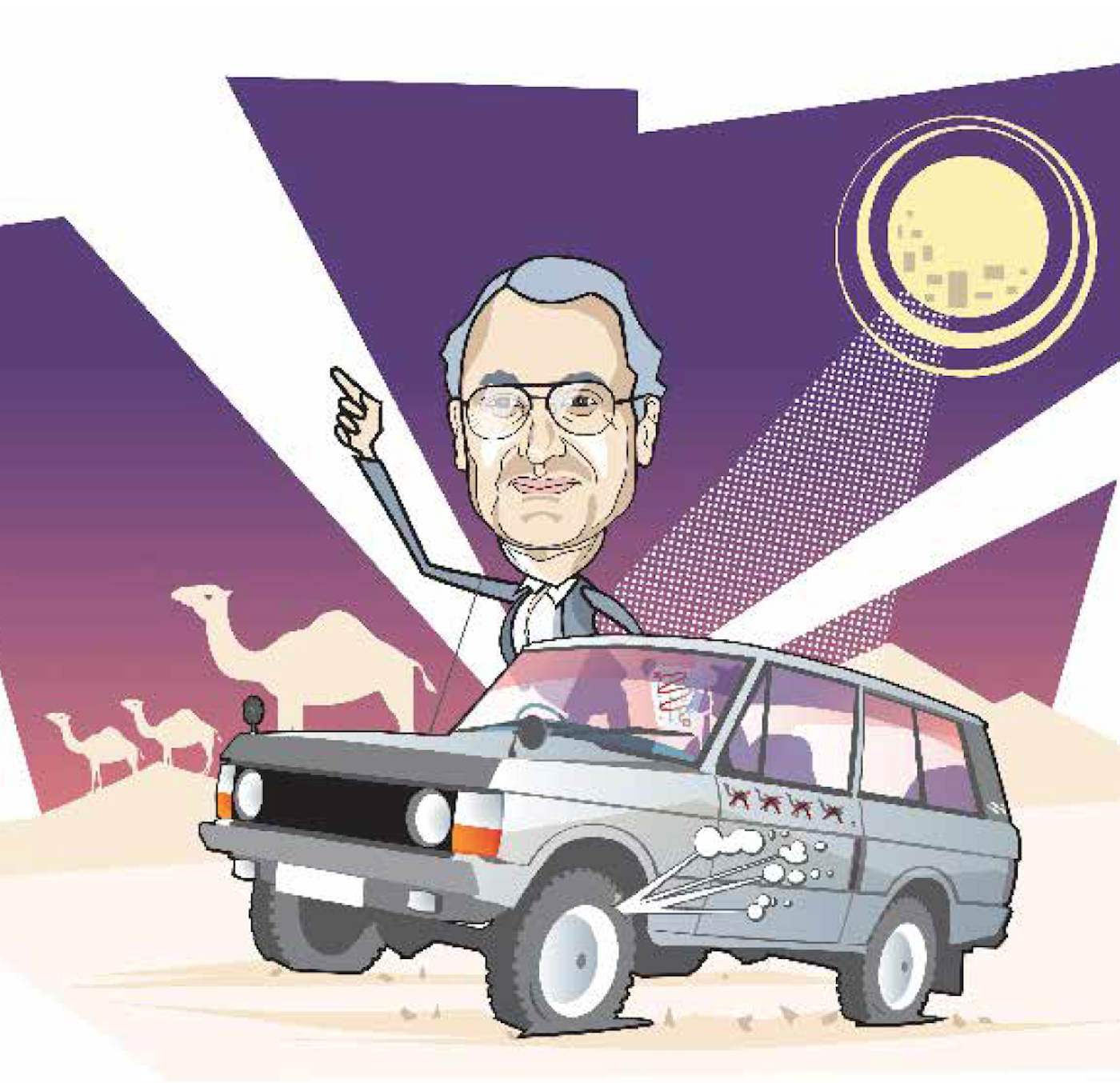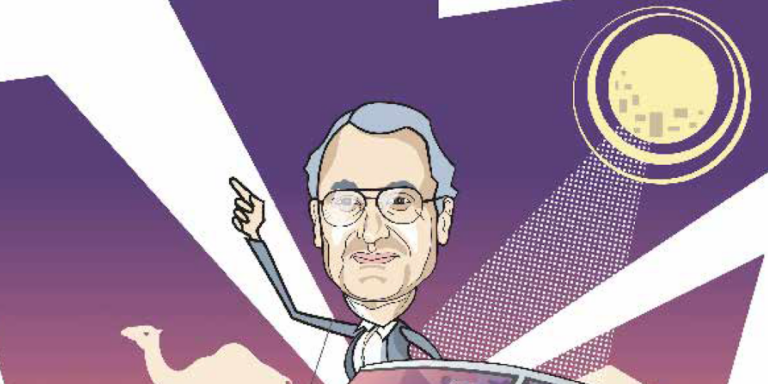In this editorial from 2005, late technical editor of Vehicle Dynamics, John Miles recalls his hair-raising run in the 1981 Paris-Dakar rally:
Autocar colleague Tony Howard and I were the only Englishmen competing in the ‘81 Dakar, in a standard Range Rover loaded with an extra 114-litre fuel tank, tools, spares, tents, and living kit – no sat-nav or outside support in those days.
We were running in the top 30 well into Algeria, and leading the standard 4×4 class when the organisers chose to lumber us with a false time penalty, dropping us 100 places. Then came something even worse – the crucial 540km (335 miles) run from Tit in Algeria near Tamanrasset, to Timeiaoune, just on the border with Mali. This stage and the next, to Gao – a dreadful 740km (460 miles) long – decimated the field. Both nearly did for us.
The desert is not all sand, like it appears on TV. Thousands of miles of tyre-shredding wasteland await you, and I saw the embedded razor-like flint just too late. We heeled over, both right-hand Michelins knifed through the sidewalls. Then, 25km (15 miles) later, our last spare Pirelli light truck tyre deflated thanks to a 13cm nail inserted between the inner tube and the outer cover – s**t! It’s no joke breaking the bead of a Range Rover tyre with tyre levers and a hammer, then inflating the assembly with a hand pump in temperatures of 40+°C.
But our problems were just beginning. After a confusing set of turns in the settlement of Silet, the route notes gave vague instructions to select one of five traces – nothing more than wheel tracks in the sand. Initially, the mountain range – and the pass through it – seemed to be getting nearer, but the track deteriorated into an expanse of rock – a black, rocky cul-de-sac. Another trace branching from the first seemed to make sense until we met at least six cars coming in the opposite direction. Yet another trail led to a grass-tufted sandpit, a sort of mad Noddyland where we met a dozen cars and a couple of trucks milling around, getting stuck fast in a first-gear-cloying hell.
The mountains were no nearer, and fuel was now a problem, so it was back to Silet for fuel and a think. We were about 70km (43 miles) out and it was now 4.30pm, six hours after we had started out. Others were lost and wondering whether to give up. Only two hours to sunset and 470km (292 miles) to go!
This time le capitain outside the French fort gave more explicit directions for the road to Timeiaoune. Success at last – soon we were flat out across a featureless plain in company with a couple of Land Cruisers. In no time the mountains were there on our left, and the three of us were through the pass trailing great plumes of dust.
The sun set so quickly; just five hours left before we were excluded, and still 300km (186 miles) to go. The going was getting rougher, the compass spinning madly on the corrugations. The navigator cannot hesitate even if he is wrong, because at 120km/h (75mph) the headlights don’t show the trace far enough in front for a change of mind. In the driving seat I could only peer ahead, looking for the big gulley that would smash the car’s suspension, at the same time keeping a bright star in view as the trace led us twisting 30° either side of track.
Alarm bells rang when we saw a string of light bulbs in the distance. We were heading inexorably toward a settlement, where no settlement should have been. Hooded figures appeared. Urgently we pleaded, “Nous cherche Timeioune!”. “Timeioune est duex cent kilometres sur la route à droite,” they said. We had just three hours to do it. Some traces were soft, with sand scraping the diff casings, dragging the speed down. Others had rocks underneath to give the axles a pounding. Soon there was another settlement, where a youth confirmed our goal was just 120km (75 miles) away, “on the trace to the right and soon right again”.
I had begun to hallucinate. Ghostly animals were leaping into our path, but any thought of caution had to go. We caught the turns to the right and then a wisp of dust – a ghostly entrail fixed in our beams. In the distance were two tail lights weaving virtually out of control (bikes) followed by two steadier lights, the Mercedes G-Wagen support vehicle. We forced our way past. Then we overshot and so had to repeat the process. A few minutes later we saw a flashing amber light – the control. We had survived, with just 10 minutes to spare. Tony went to find tyres, I swallowed some horsemeat stew, stumbled around looking for somewhere to sleep, then passed out.
Next day the stage to Gao was to be another lesson in survival. We made it to Dakar 27th overall, and as far as I know the only all-British private entry ever to finish.






